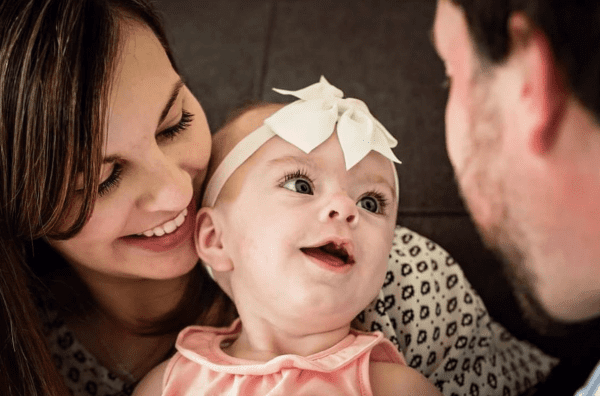
Imagine your little one forgetting the things she just barely mastered: the ability to feed herself, identify shapes and letters, and to walk and talk. You had hope that she'll live a long life before going through the challenges of a declining mind and body but for kids with "childhood Alzheimer's" these effects come sooner.
Officially titled "Sanfilippo syndrome," "childhood Alzheimer's" is so nicknamed because its symptoms mirror Alzheimer's disease. Since most parents are unaware of Sanfilippo syndrome, and therefore unable to recognize it. To make sure you aren't one of those parents, here are a few things you should know:
Sanfilippo is passed through parents
Sanfilippo is an inherited disease, meaning it is caused by gene mutations and passed to a child through parents' DNA. Specifically, Sanfilippo syndrome is autosomal recessive which means that two copies of the abnormal gene (the gene causing the disease) must be present in order to cause Sanfilippo. If both parents are carrying the mutation, the child has a 25 percent chance of having Sanfilippo syndrome.
If you think that you and your spouse may be a carriers of Sanfilippo, consider seeing a a genetic counselor so you can be aware of your child's chances of being born with Sanfilippo.
Symptoms generally aren't apparent until age one
Usually, symptoms of Sanfilippo aren't obvious for about a year. Occasionally an infant with Sanfilippo will have a bigger head than average but this isn't always the case. In general, children with Sanfilippo develop normally for a couple of years. Usually it's not until around age two or six that children with Sanfilippo begin missing developmental milestones, making their disease apparent.
Symptoms mirror Alzheimer's
As is apparent from its nickname, Sanfilippo syndrome is similar to Alzheimer's disease. Sanfilippo usually begins to be manifest through behavior issues, excessive activity and sleeplessness. Also, early on, children with Sanfilippo often get diahrrea, sinus infections and ear infections. Over time, kids with "childhood Alzheimer's" lose their ability to form words and sentences, eat on their own, walk and talk.
There is not a cure yet
Although there are some cases of people with Sanfilippo surviving into their thirties, most children with Sanfilippo Syndrome die in their late teens.
However, doctors are working to find a cure. In fact, several potential cures have already moved towards trial. You can help by donating to organizations that are researching cures, advocating for legislation that enables organizations to research cures, spreading awareness and offering support to families affected by this disease.

